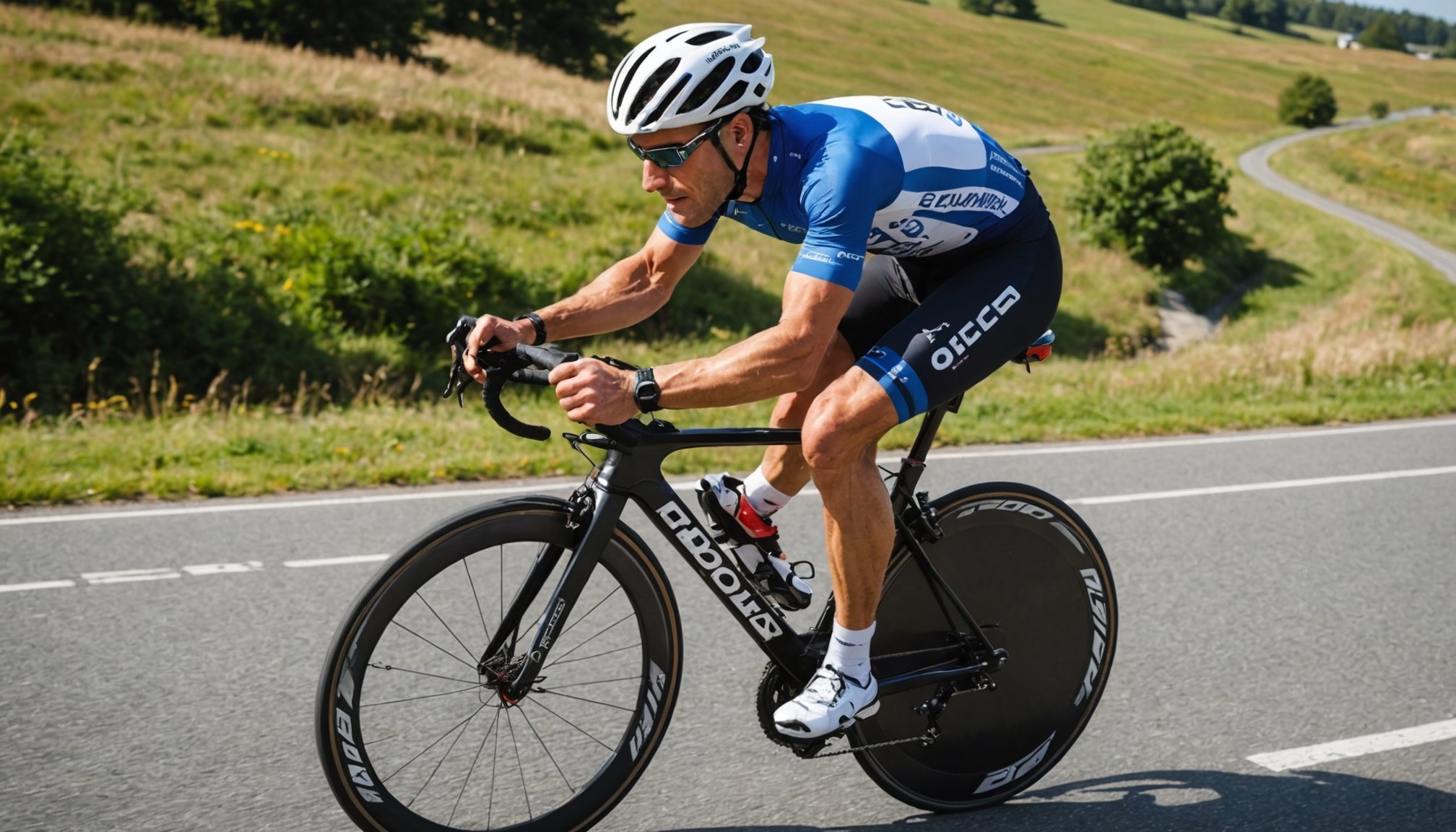Understanding Pacing in Long-Distance Cycling
When it comes to endurance cycling, understanding and applying pacing strategies can be the difference between victory and exhaustion. At its core, pacing refers to how energy expenditure is managed throughout a ride. This management is crucial in long-distance events, where maintaining a sustainable effort can lead to better performance and quicker recovery.
There are several pacing methods that cyclists employ. Steady pacing involves maintaining a consistent speed, while variable pacing allows cyclists to adjust their effort according to the terrain and personal energy levels. Negative split, another popular strategy, involves starting at a slower pace and gradually increasing speed. Each method has its advantages, and the choice often depends on the cyclist’s goals and the specific race conditions.
In the same genre : What role does hydration play in athletic performance and recovery?
Effective pacing ensures that cyclists can conserve energy for critical parts of the race, like climbs and sprints. This strategic energy management not only boosts overall performance but also aids in reducing fatigue, allowing for faster recovery. In long-distance cycling, mastering pacing contributes significantly to a cyclist’s success by balancing speed and stamina in a harmonious rhythm.
Key Pacing Strategies for Long-Distance Cycling
In long-distance cycling, using effective pacing techniques is crucial for performance optimization. By choosing the right strategy, cyclists can improve their endurance and efficiency.
Have you seen this : Unleashing velocity: essential breathing strategies for swimmers to reduce drag and enhance speed
Negative Splits
Negative splits involve starting a race at a slower pace and gradually increasing speed throughout. This technique can help conserve energy in the early stages, leaving more reserves for a strong finish. Elite cyclists often use negative splits to push ahead in the final stretches, capitalizing on competitors who may have started too fast.
Steady State Pacing
With steady state pacing, cyclists maintain a consistent speed throughout the race. This method is beneficial on flat terrain or in predictable conditions where maintaining a constant effort optimizes energy use. It reduces the risk of burning out and allows riders to keep their heart rate stable, making it a reliable choice for many athletes.
Variable Pacing
Variable pacing involves adjusting speed according to the terrain and conditions. Riders may sprint during descents and slow during climbs, optimizing their performance based on the course. This technique mimics the approaches of elite cyclists in races with significant elevation changes or changes in weather. Variable pacing requires adaptability and a keen sense of one’s capabilities.
Practical Tips for Effective Pacing
When it comes to cycling tips and enhancing your endurance training, monitoring your heart rate and power output are crucial aspects. Understanding these metrics offers insight into how intensely you’re cycling and helps maintain a steady pace over long distances. Aim to keep your heart rate within a specific zone, adapted to your fitness level, for optimal endurance and efficiency.
Before setting off on a ride, thorough pre-ride planning and establishing a solid pacing strategy are essential. This includes analysing the route to anticipate challenges and aligning your pace with your endurance capacity. It’s beneficial to set smaller goals along the way to help manage exertion levels and ensure a sustainable ride.
Nutrition and hydration undeniably play a pivotal role in pacing efficiency. During endurance training, maintaining energy levels through a balanced intake of carbohydrates, proteins, and fats is imperative. Hydrating adequately before, during, and after rides is equally important to replenish fluids lost through sweat.
By effectively integrating these elements—heart rate monitoring, strategic planning, and balanced nutrition—you can significantly improve your cycling endurance, enjoying stronger, more sustainable rides.
Tools for Tracking Performance
Understanding and improving your cycling experience is easier with cycling performance tools. These tools provide comprehensive insights into your rides, from pace and performance to route tracking, offering both amateurs and professionals a way to elevate their game.
Devices such as cycling computers and smartwatches are at the forefront. These tools use GPS technology for real-time data, allowing you to monitor your speed, distance, and even cadence as you cycle. Not only do they keep you informed about your current stats, but they also help in setting personal goals and tracking your progress over time.
Popular apps like Strava and Garmin Connect serve as a bridge between technology and cycling, providing an in-depth analysis of your activities. They support features like social sharing, competition with friends, and community challenges, which can be motivating and fun.
When comparing tracking tools, consider factors like user interface, data accuracy, battery life, and additional features like heart rate monitoring. Whether you lean towards simplicity or a more data-rich experience, there’s a cycling performance tool catering to your preferences. Embrace these innovations and make informed decisions about your cycling adventures.
Training Plans to Enhance Pacing Skills
When enhancing pacing skills, understanding and implementing effective cycling training plans is crucial. These plans should revolve around the individual cyclist’s specific needs and goals.
Periodization
Periodization is a methodical approach where training is divided into cycles. This technique alternates between endurance workouts and recovery phases to prevent overtraining. By focusing on distinct phases, cyclists build stamina and improve their pacing over time, ensuring they’re strong on race day.
Customizing Training Intensity
Adjusting training intensity according to personal fitness levels is critical. Cyclists should begin with lighter sessions and gradually scale up, ensuring workouts push but do not exhaust. Tailoring training this way caters to unique fitness profiles, fostering sustained progress in pacing capabilities, preventing burnout and injury.
Incorporating Interval Training
Interval training plays a pivotal role in enhancing pacing strategies. By incorporating short, high-intensity bursts amid longer, moderate efforts, cyclists elevate their stamina. Interval workouts effectively mimic real racing conditions, sharpening both aerobic and anaerobic systems. This balance is instrumental in helping cyclists maintain consistent speeds even in challenging segments of a ride.
By integrating these strategies, cyclists can develop a comprehensive training regimen aimed at optimizing their pacing performance.
Expert Opinions and Case Studies
In the world of competitive cycling, insights from seasoned cyclists and coaches can be invaluable, particularly when it comes to pacing strategies. Experienced athletes often emphasize the importance of understanding one’s physical limits and tailoring pacing to the unique demands of each race. For instance, seasoned cyclists stress the significance of maintaining a consistent pace throughout long competitions, adjusting based on terrain and conditions.
Athlete case studies provide enlightening examples of successful pacing. These studies often highlight moments where pacing adjustments led to competitive advantages. For example, a well-documented case showed how an athlete’s strategic energy conservation early in a race allowed for a powerful finish, outpacing rivals who began too aggressively.
Moreover, supporting data from these studies underscore the effectiveness of tailored pacing methods. Research often reveals that those who implement pacing strategies based on real-time data—such as heart rate monitors and power meters—perform better. By analysing such data, cyclists can optimise their race day tactics, ensuring they’re neither pushing too hard nor holding back unnecessarily. This data-driven approach aligns with the insights shared by cycling experts, blending intuition with technology for enhanced results.











